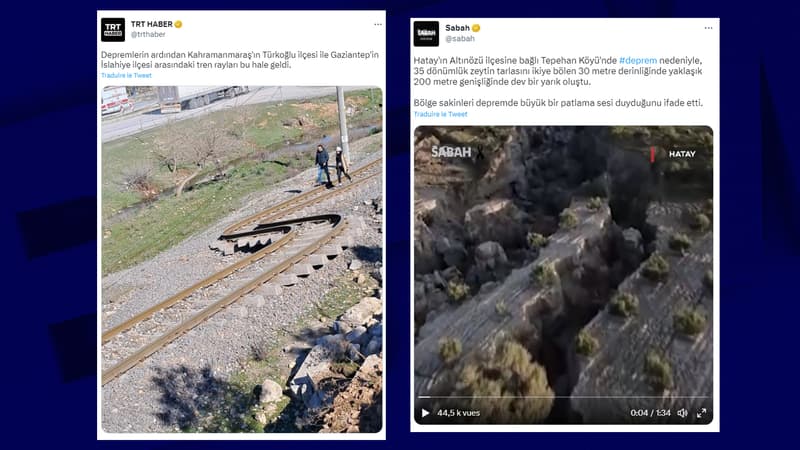In the early hours of Monday, February 6, the earth trembled on the Turkish-Syrian border. A magnitude 7.8 earthquake, followed by many aftershocks, killed at least 24,000 people. As rescue operations continue, images are emerging showing the aftermath of the tremor on the surface.
The Reuters agency was able to take drone images in the Turkish city of Kahramanmaraş, the closest to the epicenter of the earthquake. We see a crack running through the fields and roads for several kilometers, causing landslides and landslides in its path. The asphalt and road barriers did not resist.
Fields crossed by a crack
At Tepehan, gorges have been created near houses. The rocks have collapsed and now trees stand on the side of the hill, their roots in the void.
Diary Release He was able to locate an image widely disseminated on social networks, where normally parallel rails can be seen, deformed by the tremors, making them impassable. The image was taken near the city of Şekeroba, south of Kahramanmaraş.
a shallow earthquake
These geological phenomena observable on the surface are mainly explained by the violence of the earthquake that struck the region. With a magnitude of 7.8, it was followed by a violent aftershock. Strange fact, the latter was of a magnitude almost equal to the initial earthquake, 7.5.
But also because the earth trembled relatively close to the surface. This explains the considerable number of victims, the massive destruction of houses and the cracks.
“The shaking at the surface was more severe than if the earthquake had been located deeper,” David Rothery, a planetary geoscientist at Britain’s Open University, told Reuters.
Rescue operations continue. On Friday, several children were rescued from the rubble, five days after the tremors.
Source: BFM TV


